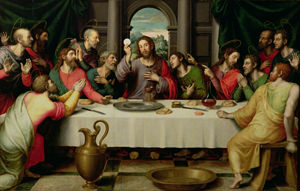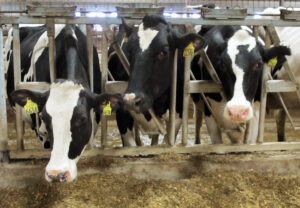‘Portion Distortion’ Creeps Into Last Supper Paintings
Imagining and depicting Jesus' final meal with his apostles has been an artistic obsession since the dawning of the Common Era, and thus it's only fitting that the holy vittles on their plates might reflect the attitude about food prevalent in the cultures that produced the artists.
Imagining and depicting Jesus’ final meal with his apostles has been an artistic obsession since the dawning of the Common Era, and thus it’s only fitting that the holy vittles on their plates might reflect the attitude about food prevalent in the cultures that produced the artists.
The order of the day for more recent images would, not surprisingly, be “supersize me,” according to an academic study that surveyed images of the Last Supper created over several centuries. –KA
Your support matters…Los Angeles Times:
Using the size of the diners’ heads as a basis for comparison, the Wansinks used computers to compare the sizes of the plates in front of the apostles, the food servings on those plates and the bread on the table. Assuming that heads did not increase in size during the second millennium after the birth of Christ, the researchers used this method to gauge how much serving sizes increased.
And increase they did.
Over the course of the millennium, the Wansinks found that the entrees depicted on the plates laid before Jesus’ followers grew by about 70%, and the bread by 23%.
As entree portions rose, so too did the size of the plates — by 65.6%.
Independent journalism is under threat and overshadowed by heavily funded mainstream media.
You can help level the playing field. Become a member.
Your tax-deductible contribution keeps us digging beneath the headlines to give you thought-provoking, investigative reporting and analysis that unearths what's really happening- without compromise.
Give today to support our courageous, independent journalists.









You need to be a supporter to comment.
There are currently no responses to this article.
Be the first to respond.